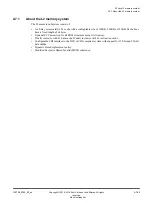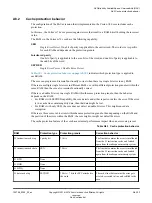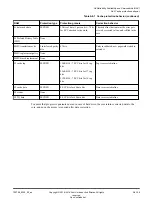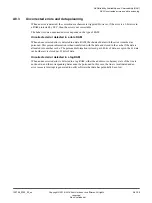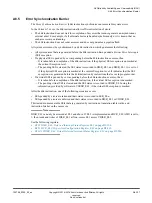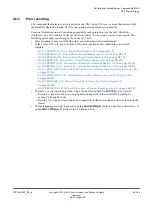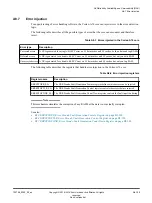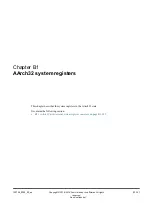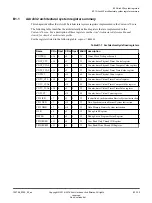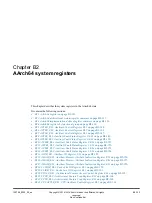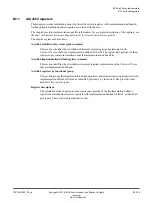
A9.1
About the Generic Interrupt Controller CPU interface
The Cortex-A76 core implements the GIC CPU interface as described in the Arm
Generic Interrupt
Controller Architecture Specification.
This interfaces with an external GICv3 or GICv4 distributor component within the cluster system and is
a resource for supporting and managing interrupts. The GIC CPU interface hosts registers to mask,
identify and control states of interrupts forwarded to that core. Each core in the cluster system has a GIC
CPU interface component and connects to a common external distributor component.
Note
This chapter describes only features that are specific to the Cortex-A76 core implementation. Additional
information specific to the cluster can be found in
Arm
®
DynamIQ
™
Shared Unit Technical Reference
Manual
.
The GICv4 architecture supports:
• Two security states.
• Interrupt virtualization.
•
Software-generated Interrupts
(SGIs).
• Message Based Interrupts.
• System register access for the CPU interface.
• Interrupt masking and prioritization.
• Cluster environments, including systems that contain more than eight cores.
• Wake-up events in power management environments.
The GIC includes interrupt grouping functionality that supports:
• Configuring each interrupt to belong to an interrupt group.
• Signaling Group 1 interrupts to the target core using either the IRQ or the FIQ exception request.
Group 1 interrupts can be Secure or Non-secure.
• Signaling Group 0 interrupts to the target core using the FIQ exception request only.
• A unified scheme for handling the priority of Group 0 and Group 1 interrupts.
This chapter describes only features that are specific to the Cortex-A76 core implementation.
Related references
Chapter B4 GIC registers
A9 Generic Interrupt Controller CPU interface
A9.1 About the Generic Interrupt Controller CPU interface
100798_0300_00_en
Copyright © 2016–2018 Arm Limited or its affiliates. All rights
reserved.
A9-112
Non-Confidential
Summary of Contents for Cortex-A76 Core
Page 4: ......
Page 22: ......
Page 23: ...Part A Functional description ...
Page 24: ......
Page 119: ...Part B Register descriptions ...
Page 120: ......
Page 363: ...Part C Debug descriptions ...
Page 364: ......
Page 401: ...Part D Debug registers ...
Page 402: ......
Page 589: ...Part E Appendices ...
Page 590: ......

